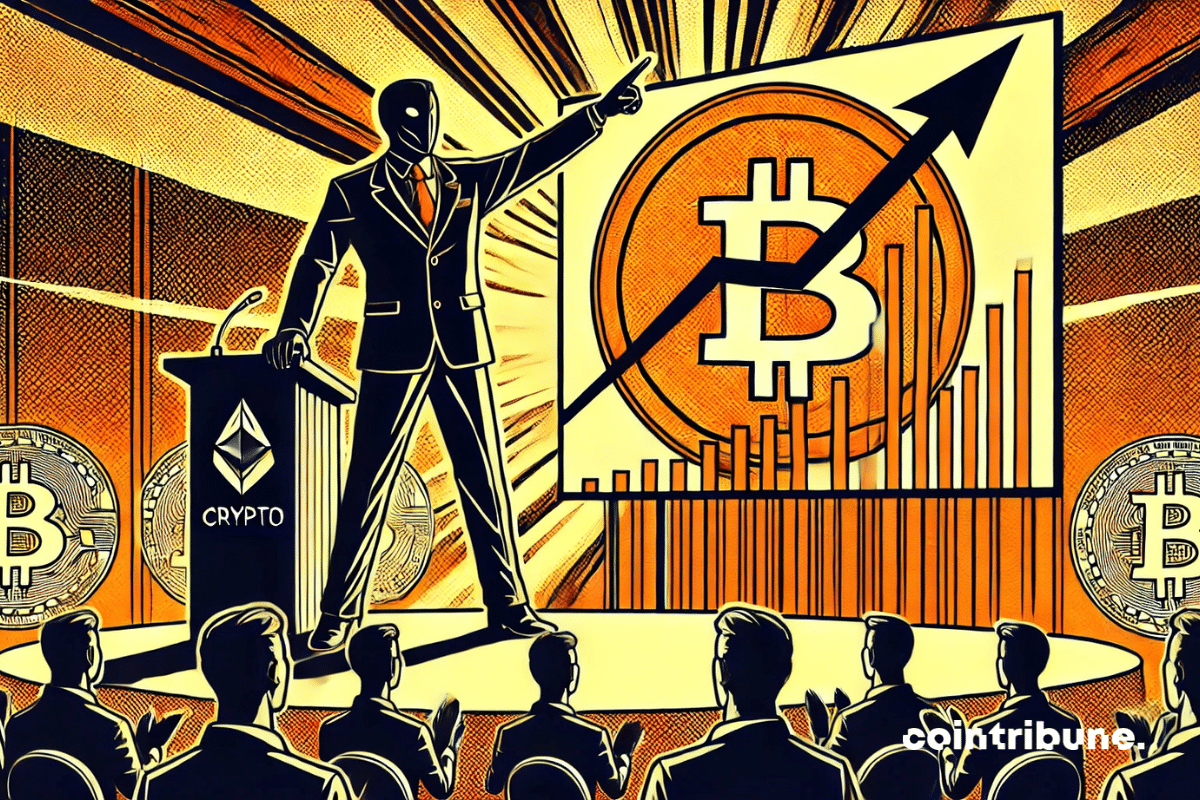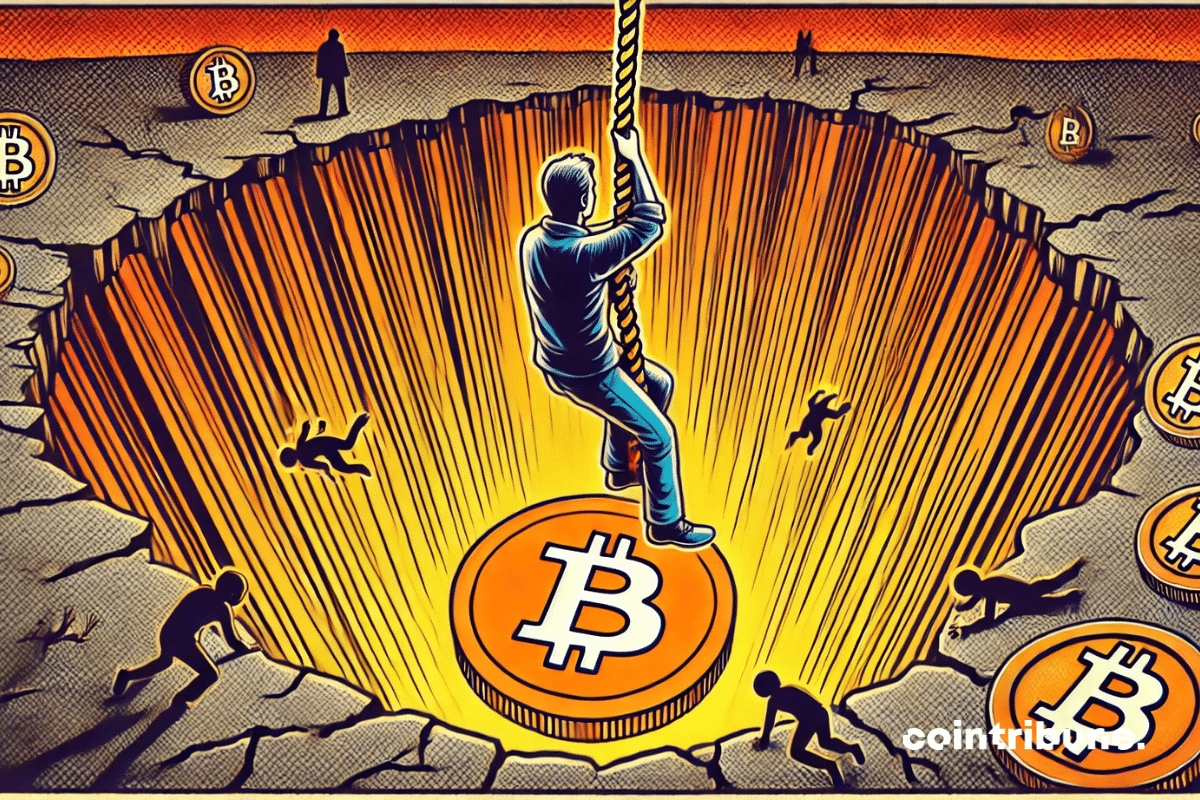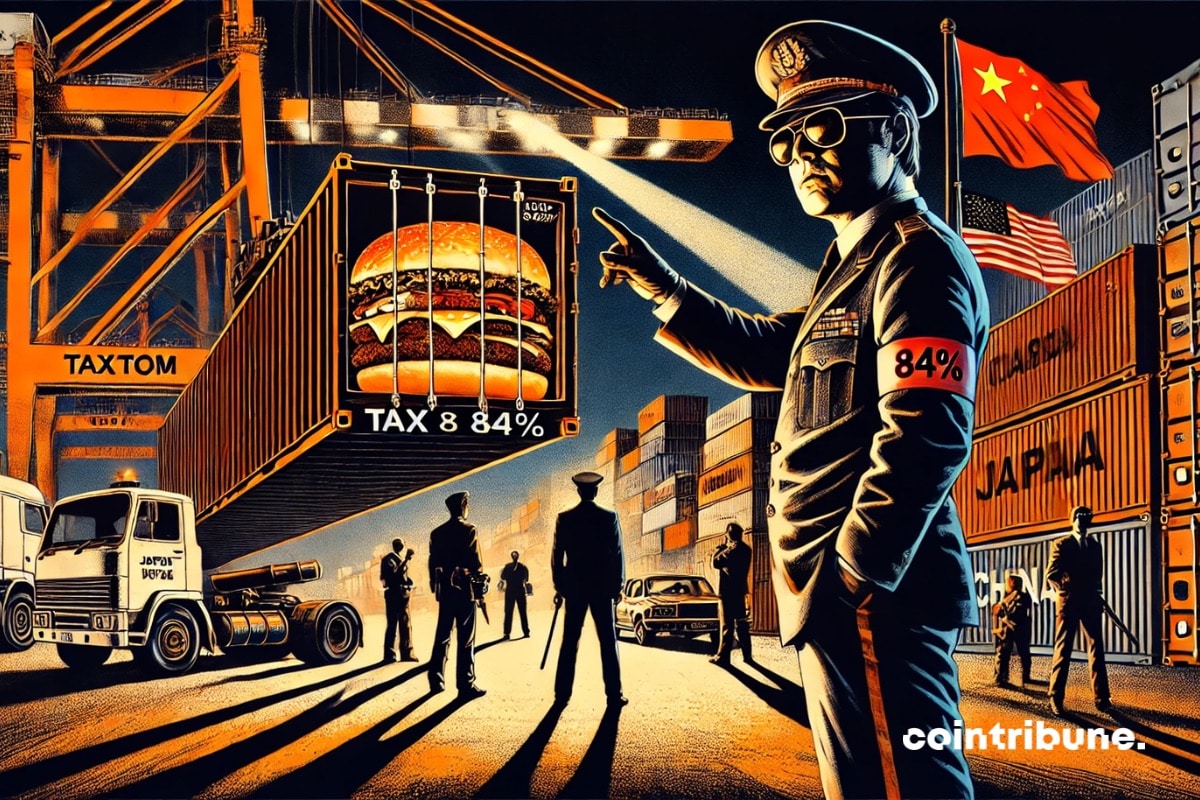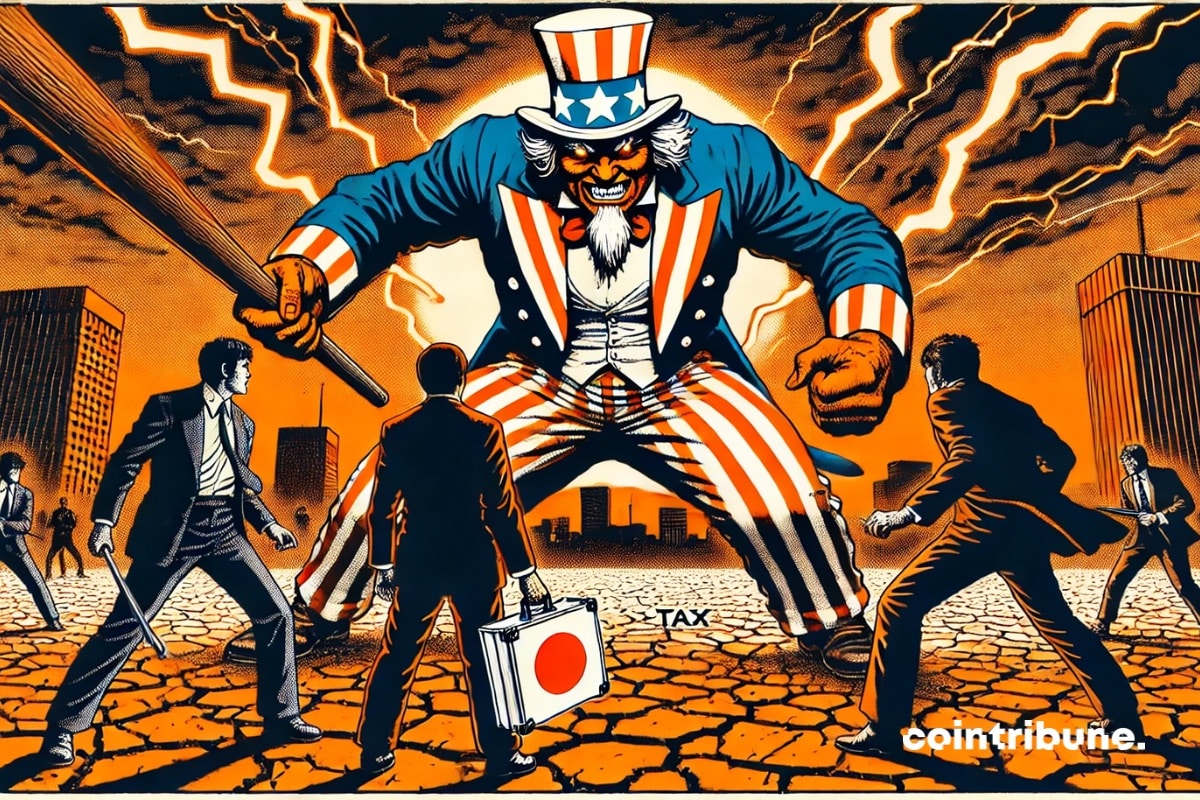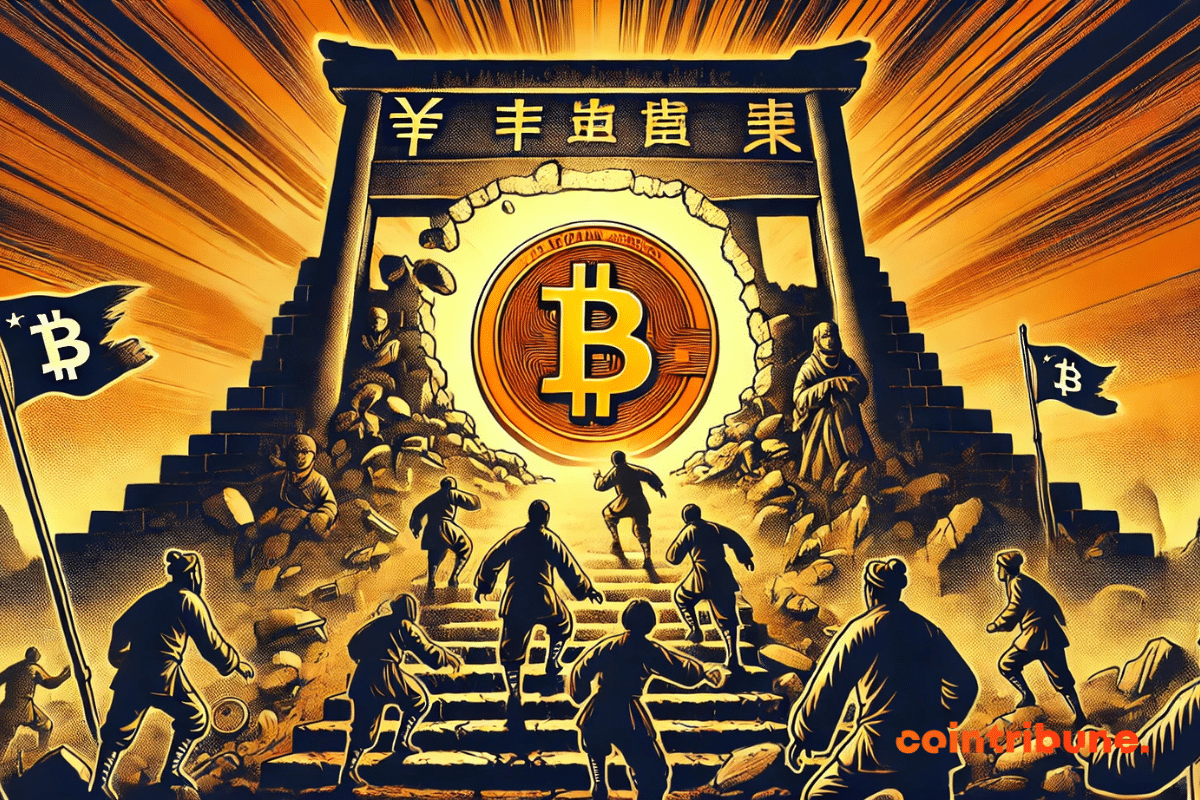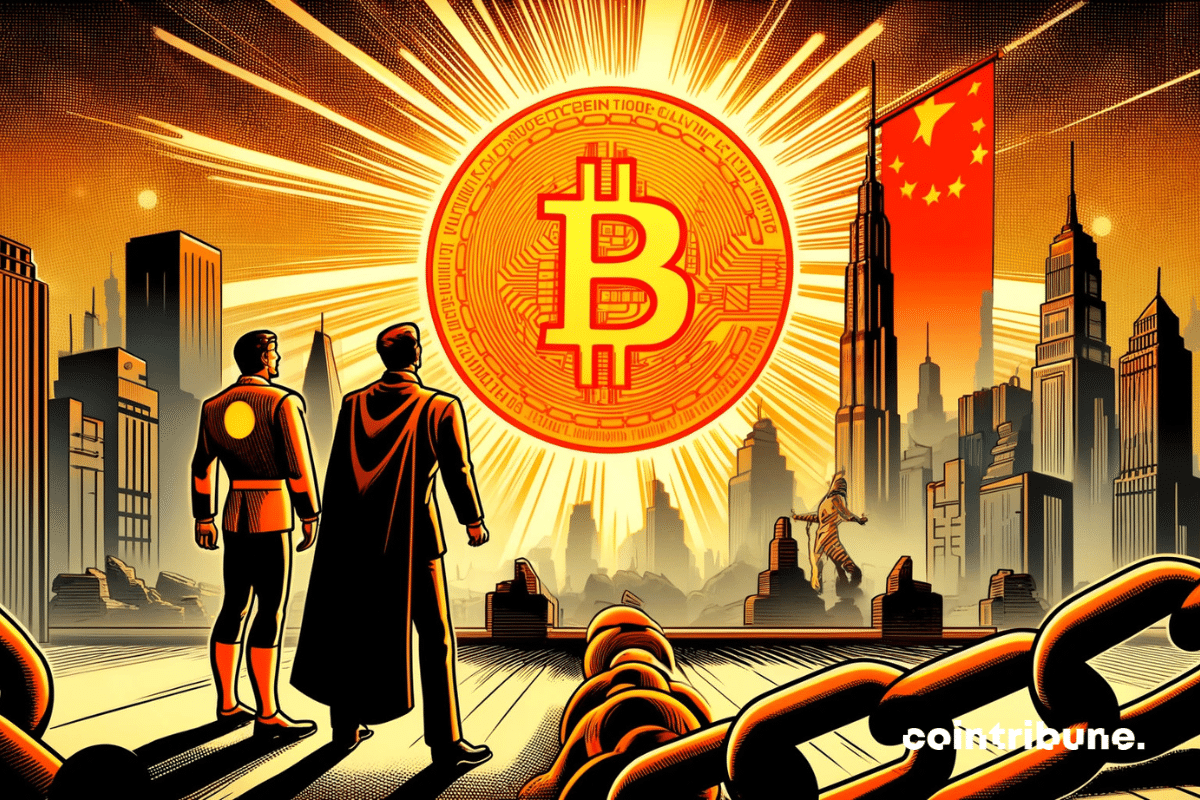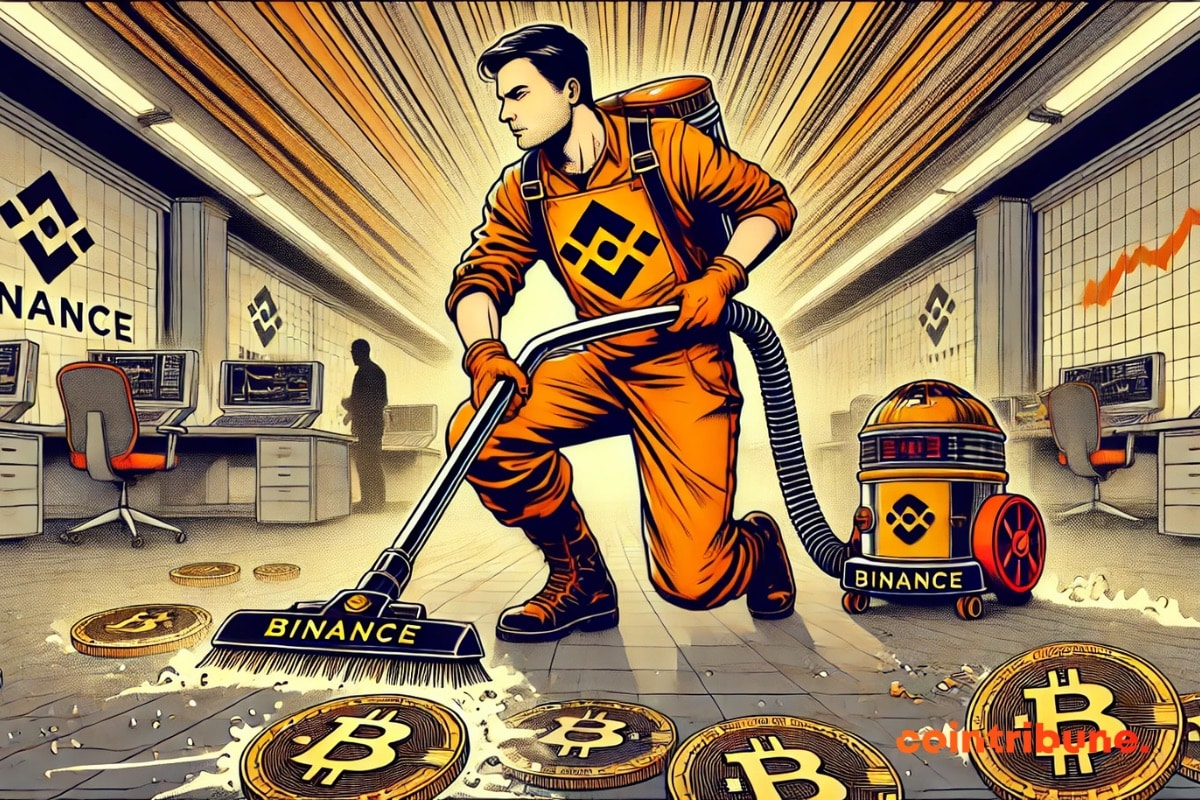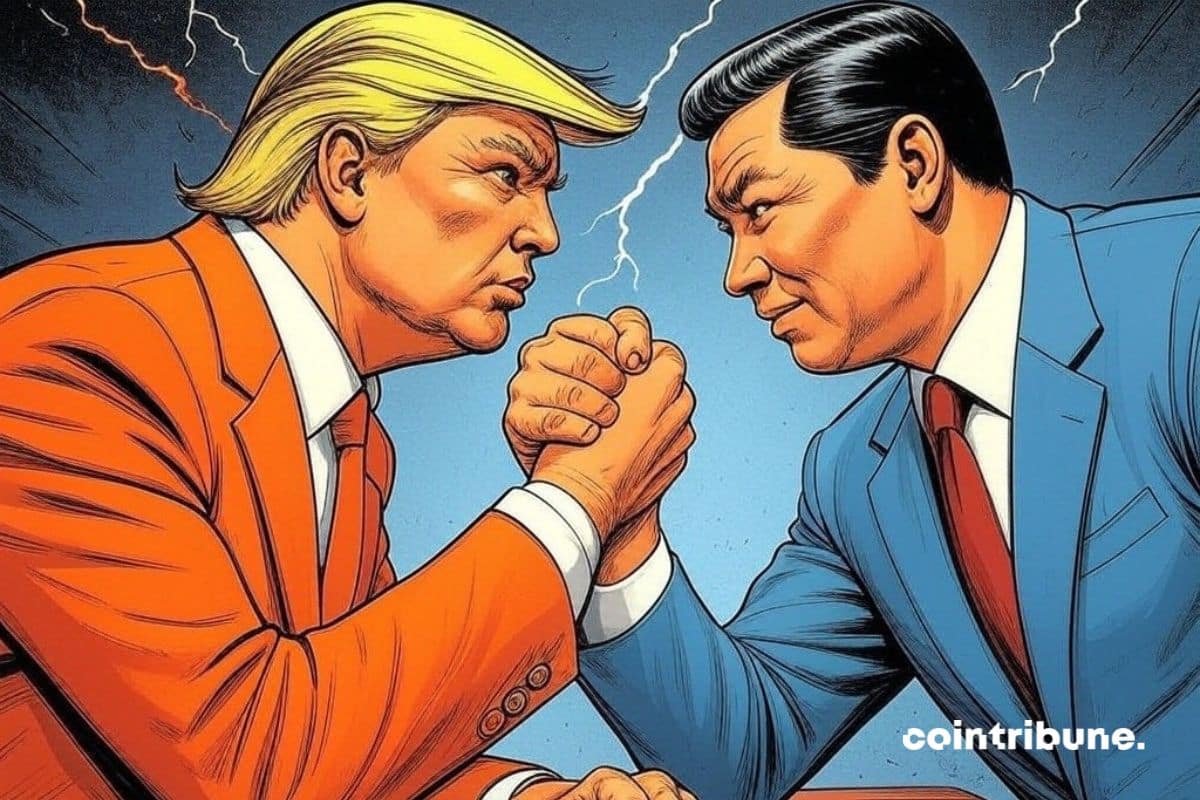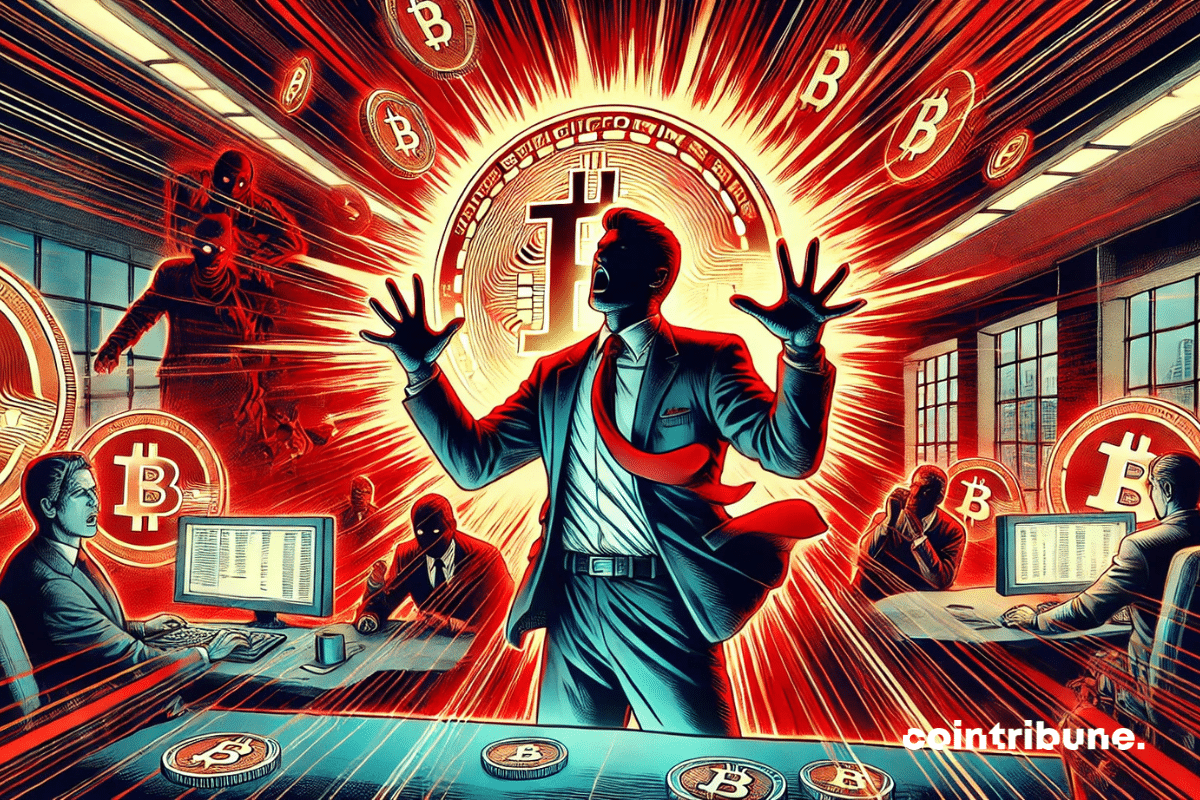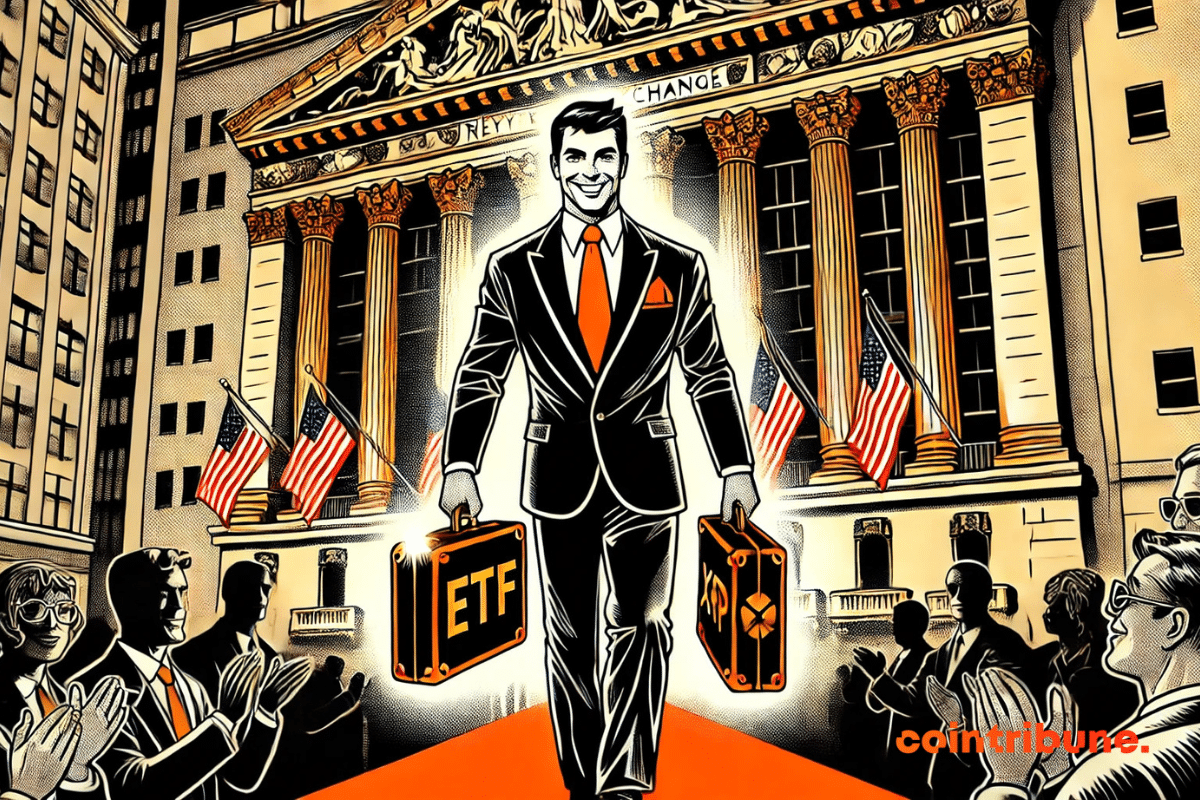The surprising decision by U.S. President Donald Trump to temporarily suspend reciprocal tariff rights has quickly reassured the markets and reduced the prospects of an economic recession.
Cmc RSS
As the trade war between the United States and China threatens the global balance, bitcoin is gradually emerging as the next international reserve currency.
Long suppressed by regulations deemed hostile, the American crypto industry may be on the brink of a major turnaround. Indeed, Donald Trump's return to the White House is accompanied by a clear shift in direction: to make the United States a bastion of financial technologies. An unprecedented discourse is taking root at the top of the state, driven by a desire to break away from the Biden era. Behind the announcements, a strategy is taking shape, promising a new momentum for cryptos and a rehabilitation of the sector in the eyes of regulators.
The American markets experienced a spectacular turnaround this Wednesday, April 9, leading to a surge in bitcoin-related stocks. The cause: the 90-day pause on tariffs announced by President Donald Trump. A partial truce that excludes China but was enough to rekindle the appetite for crypto assets.
As the BRICS intensify their dedollarization strategy, Beijing and Moscow are taking an unprecedented step: using bitcoin to settle certain trade transactions. This initiative, revealed by VanEck, marks a symbolic turning point in the internationalization of cryptocurrencies. It reflects a clear intention to break free from financial circuits dominated by the West, aiming to give bitcoin a new geopolitical role. This shift could herald a new monetary order in which cryptocurrencies redefine the levers of economic sovereignty.
Shiba Inu refuses to add a zero, resisting with the elegance of a vigilant doge. But without a jolt from big brother Bitcoin, the rally is still just a pious wish.
In just a matter of minutes, bitcoin crossed a symbolic threshold: $82,000. A meteoric rise, directly linked to Donald Trump's surprise announcement. The American president declared a 90-day truce on reciprocal tariffs with several countries while toughening his stance against China. The markets, thirsty for certainty, reacted in a cascade. But behind these spectacular figures lies a more complex reality: bitcoin, far from being just a speculative asset, is establishing itself as a barometer of geopolitical tensions.
In the face of the recent plunge of bitcoin below the $75,000 mark, Michael Saylor, president of MicroStrategy's strategy, needed just one word to reaffirm his position: "HODL." This emblematic term of the crypto community perfectly summarizes the businessman’s philosophy.
"Kraken and Mastercard are teaming up to launch a crypto debit card in Europe and the UK. This announcement illustrates the willingness of industry giants to make cryptocurrencies a tangible payment tool, beyond speculation. In a market under regulatory pressure, this initiative embodies a new phase: that of usage and the real integration of cryptocurrencies into everyday life. It is a strong signal at a time when the industry is seeking tangible and compliant use cases."
Blockchain in decline? Developers are abandoning the crypto space at an alarming rate. We provide all the details in this article!
Bitcoin is facing increasing pressure since the resurgence of the trade war initiated by Donald Trump. While many hoped to see the asset detach from the influence of Wall Street, reality is catching up with the markets: the rise in U.S. bond yields is dampening initial enthusiasm.
China announced on April 9 a dramatic increase in tariffs on American products, which will rise to 84% starting April 10, 2025 at 12:01 AM. This decision is a direct response to Donald Trump, who had raised tariffs on Chinese imports to 104% the day before!
A new trade tension is shaking relations between Washington and Tokyo. Donald Trump's recent decision to impose massive tariffs on Japanese products is causing a shockwave. Japan is reacting, setting up a delegation, and trying to contain the crisis before it worsens.
The blockchain analysis company Bubblemaps revealed on Monday that over 30 million dollars worth of the memecoin MELANIA were transferred and sold discreetly, without any official communication from the project team.
The Sino-American economic war is flaring up again and dragging the yuan down with it. In response to Donald Trump's aggressive decision to impose drastic tariffs on Chinese products, Beijing is retaliating by intentionally allowing its currency to slide to its lowest levels since 2023. The unexpected consequence? A massive rush of Chinese investors towards bitcoin, which has become a lifeline in the face of uncertainty.
Europe believed it had locked down cryptocurrencies with MiCA. ESMA sets the record straight: too many gateways, too many risks. When tokens cough, finance could catch a cold.
According to Arthur Hayes, founder of BitMEX, China's reaction to the new American tariffs could trigger a massive capital flight towards bitcoin. This dynamic, which has already been observed in the past, could reignite the bullish trend of the crypto market in 2025.
Solana is deploying record volumes and seeing its TVL climb, but the price remains stuck below $130, held back by resistance. The crypto market is still waiting for the trigger for a rally.
Global trade is wobbling under the effect of a new escalation between Washington and Beijing. Donald Trump is reigniting the tariff offensive against China, rekindling a trade war that marked his previous term. Beijing, far from backing down, is deploying a firm response, determined to defend its strategic interests. This renewed showdown between the two superpowers resonates well beyond customs, threatens global economic balances, and stirs tensions in international markets. A confrontation whose implications could be felt well beyond American and Chinese borders.
Ethereum is wobbling, and the shadow of previous bear cycles resurfaces. In just three months, ETH has lost more than 65% of its value, bringing speculators and investors to a major psychological threshold: $1,000. This drop would not be a simple correction but an echo of the crashes of 2018 and 2022. As indicators slide into panic zones, the prospect of a definitive floor fuels both the hope of a rebound and the fear of prolonged capitulation.
The trade war orchestrated by Donald Trump has reached an unprecedented level, with record tariffs of 104% imposed on Chinese products. This sudden, almost surreal escalation has caught the crypto markets off guard, immediately plunging bitcoin into a downward spiral. But is this decline sustainable or merely a masked opportunity?
Binance makes a significant move by announcing the removal of 14 tokens from its platform starting April 16. This unprecedented decision, guided by a community vote and enhanced quality criteria, marks a turning point in the giant exchange's strategy for selecting crypto projects.
In a move that further intensifies the economic tensions between Donald Trump and China, the White House announced the imposition of an additional 104% tariffs on Chinese imports. This measure comes after China has evidently maintained its own 34% duty on American exports.
Michael Saylor, an emblematic figure of Bitcoin, has long wielded his strategy as a banner of absolute hodl. However, a recent filing with the SEC has begun to crack this narrative. The man who promised to bequeath his BTC to a dedicated foundation is now considering selling — at least under duress. A turnaround that raises questions: how far can one challenge financial and regulatory realities in the name of conviction?
James Murphy is suing the U.S. government under a FOIA complaint, hoping to obtain documents regarding the identity of Satoshi Nakamoto, following revelations from a DHS agent about a meeting in 2019.
The Securities and Exchange Commission (SEC) announced a roundtable titled "Between a Block and a Hard Place: Tailoring Regulation for Crypto Trading" on April 11, 2025, in Washington, D.C. This event will bring together key figures from the crypto industry and traditional finance to discuss the development of a regulatory framework tailored to crypto trading.
Global stock markets regained some stability on Tuesday after three days of historic turbulence, despite worsening trade tensions triggered by Donald Trump's new protectionist measures.
The crypto landscape, shaken by adverse winds in recent weeks, is finally showing signs of resilience. As Bitcoin grazed $75,000 before bouncing back toward $80,000, altcoins like XRP and Dogecoin recorded gains of 10%, giving the market a breath of fresh air. This upswing comes as overall market capitalization returns to November levels, a time marked by Donald Trump's election. A technical rebound, massive liquidations, and a ripple effect among traders: decoding a relief that is as brutal as it is unexpected.
Wall Street opens its doors to XRP. Teucrium Investment Advisors is set to launch the very first ETF backed by Ripple's native asset on American soil. A leveraged product, with no direct holdings, which reflects the growing desire of traditional financial markets to capture the volatility (and potential profits) of the crypto ecosystem. While the industry is still waiting for the green light for a spot XRP ETF, this launch sounds like a strategic accelerator.
The investment of 686,567 ADA by Cardano during the crypto market crisis: a winning or risky strategy? Analysis.


